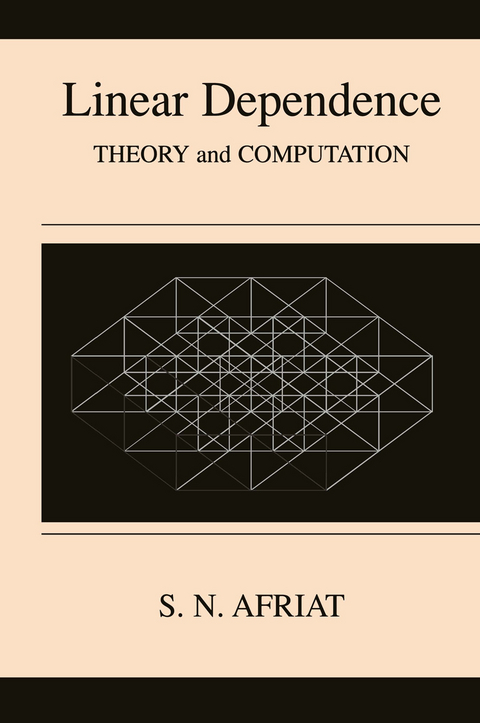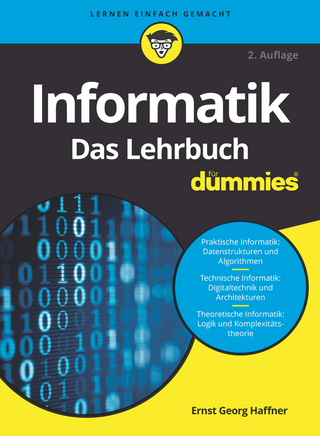
Linear Dependence
Theory and Computation
Seiten
2000
Kluwer Academic/Plenum Publishers (Verlag)
978-0-306-46428-7 (ISBN)
Kluwer Academic/Plenum Publishers (Verlag)
978-0-306-46428-7 (ISBN)
Deals with the most basic notion of linear algebra, to bring emphasis on approaches to the topic serving at the elementary level and more broadly.
A typical feature is where computational algorithms and theoretical proofs are brought together. Another is respect for symmetry, so that when this has some part in the form of a matter it should also be reflected in the treatment. Issues relating to computational method are covered. These interests may have suggested a limited account, to be rounded-out suitably. However this limitation where basic material is separated from further reaches of the subject has an appeal of its own.
To the `elementary operations' method of the textbooks for doing linear algebra, Albert Tucker added a method with his `pivot operation'. Here there is a more primitive method based on the `linear dependence table', and yet another based on `rank reduction'. The determinant is introduced in a completely unusual upside-down fashion where Cramer's rule comes first. Also dealt with is what is believed to be a completely new idea, of the `alternant', a function associated with the affine space the way the determinant is with the linear space, with n+1 vector arguments, as the determinant has n. Then for affine (or barycentric) coordinates we find a rule which is an unprecedented exact counterpart of Cramer's rule for linear coordinates, where the alternant takes on the role of the determinant. These are among the more distinct or spectacular items for possible novelty, or unfamiliarity. Others, with or without some remark, may be found scattered in different places.
A typical feature is where computational algorithms and theoretical proofs are brought together. Another is respect for symmetry, so that when this has some part in the form of a matter it should also be reflected in the treatment. Issues relating to computational method are covered. These interests may have suggested a limited account, to be rounded-out suitably. However this limitation where basic material is separated from further reaches of the subject has an appeal of its own.
To the `elementary operations' method of the textbooks for doing linear algebra, Albert Tucker added a method with his `pivot operation'. Here there is a more primitive method based on the `linear dependence table', and yet another based on `rank reduction'. The determinant is introduced in a completely unusual upside-down fashion where Cramer's rule comes first. Also dealt with is what is believed to be a completely new idea, of the `alternant', a function associated with the affine space the way the determinant is with the linear space, with n+1 vector arguments, as the determinant has n. Then for affine (or barycentric) coordinates we find a rule which is an unprecedented exact counterpart of Cramer's rule for linear coordinates, where the alternant takes on the role of the determinant. These are among the more distinct or spectacular items for possible novelty, or unfamiliarity. Others, with or without some remark, may be found scattered in different places.
1 Matrices.- 2 Linear Space.- 3 Linear Dependence.- 4 Dimension.- 5 Replacement.- 6 Linear Equations.- 7 Determinants.- 8 Determinants and Matrices.- 9 Quadratic Forms.- 1 Permutations.- 2 Combinations.- 1 Maximal replacement.- 2 Rank reduction.- 3 Tucker’s pivot algorithm.- 4 Extended rank reduction.- 5 Permutations.- 6 Combinations.
| Zusatzinfo | XV, 175 p. |
|---|---|
| Verlagsort | New York |
| Sprache | englisch |
| Maße | 152 x 229 mm |
| Themenwelt | Mathematik / Informatik ► Informatik ► Theorie / Studium |
| Mathematik / Informatik ► Mathematik ► Algebra | |
| Mathematik / Informatik ► Mathematik ► Angewandte Mathematik | |
| Mathematik / Informatik ► Mathematik ► Arithmetik / Zahlentheorie | |
| ISBN-10 | 0-306-46428-4 / 0306464284 |
| ISBN-13 | 978-0-306-46428-7 / 9780306464287 |
| Zustand | Neuware |
| Informationen gemäß Produktsicherheitsverordnung (GPSR) | |
| Haben Sie eine Frage zum Produkt? |
Mehr entdecken
aus dem Bereich
aus dem Bereich
Eine Einführung in die Systemtheorie
Buch | Softcover (2022)
UTB (Verlag)
25,00 €
was jeder über Informatik wissen sollte
Buch (2024)
Springer Vieweg (Verlag)
37,99 €


